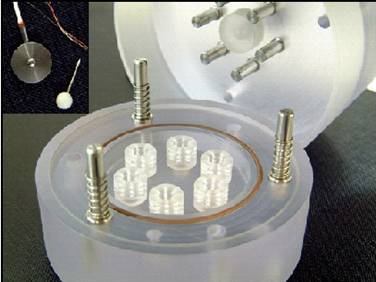They did this by mechanical stimulation that creates an innovative facility that was built at the Technion

The Technion researchers succeeded in building cartilage tissue outside the human body. The researchers, Professor Yosef Mizrahi and Dr. Dror Slickter, built an innovative device, a bioreactor that creates mechanical stimuli that build the tissue.
"The basis is a polymer, which serves as a scaffold into which we implant the cells," explains Professor Yosef Mizrahi, head of the Technion's Biomedical Engineering Department. "The polymer solidifies and allows mechanical loads to be transferred to the cell, which begins to produce a protein that will eventually replace the 'polymeric scaffold' that will degrade."
Dr. Dror Slickter adds that the "scaffold" is designed to be degraded by the dynamics of protein creation. "The 'scaffold' became redundant when the protein was created," he explains.
The research is carried out in collaboration with Dr. Jennifer Elisif, from the Johns Hopkins University in the USA, who succeeded in growing embryonic stem cells in the tissue of goats, in a way that simulates the development of bone cells.
"We want to direct the basic, primitive cell to develop as a cartilage or bone cell," explains Professor Mizrahi. "We are investigating whether there are environmental conditions that cause this cell to differentiate into a cartilage cell or a bone cell."
The Technion researchers make it clear that the regenerative capacity of cartilage tissue, in the event of damage or wear and tear, is small and practically zero, therefore the majority of the population suffers from back pain or joint pain.
